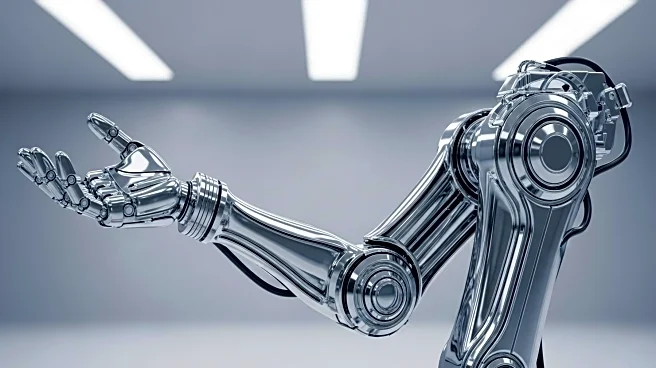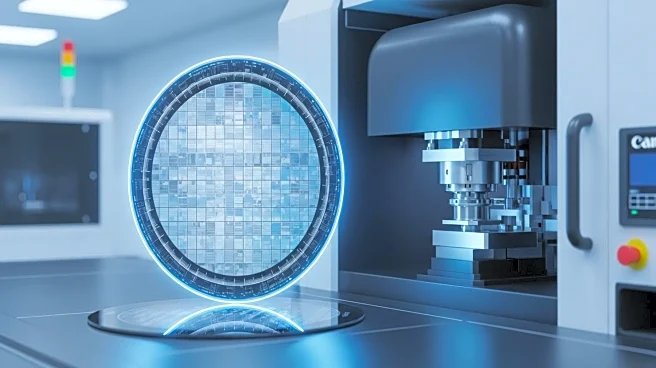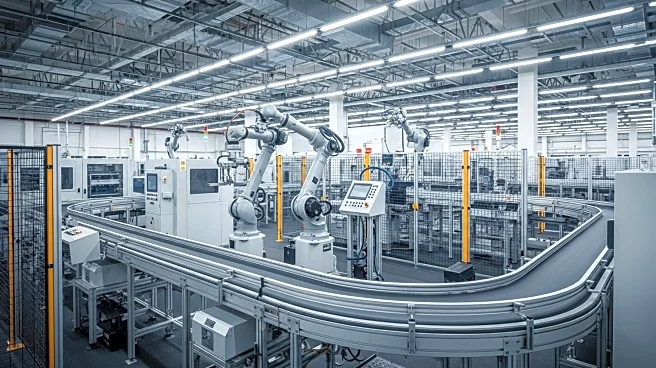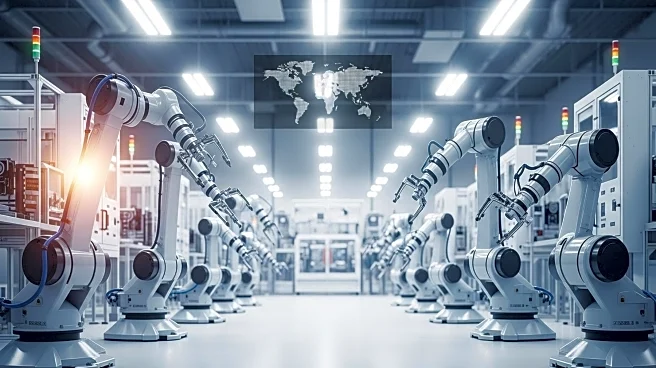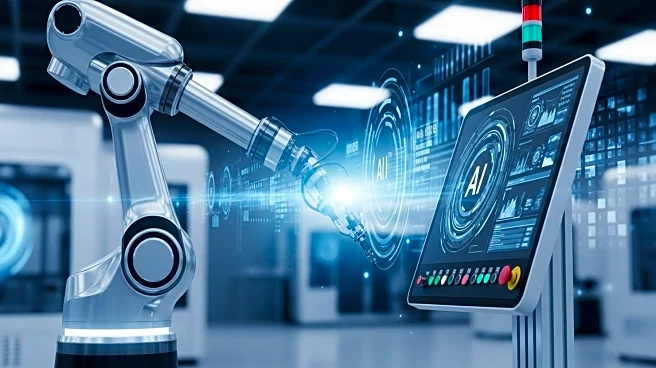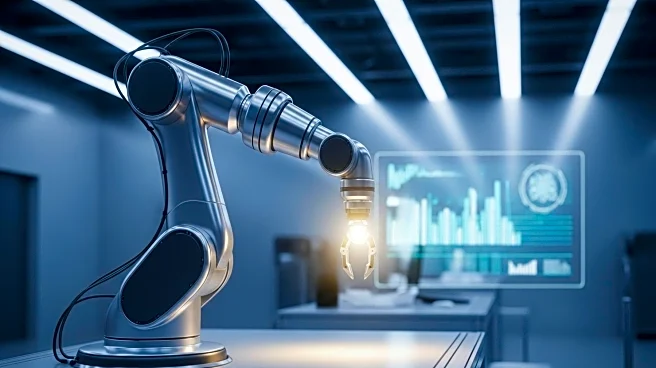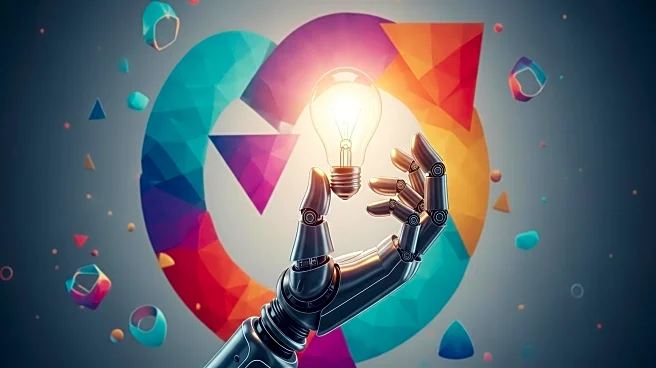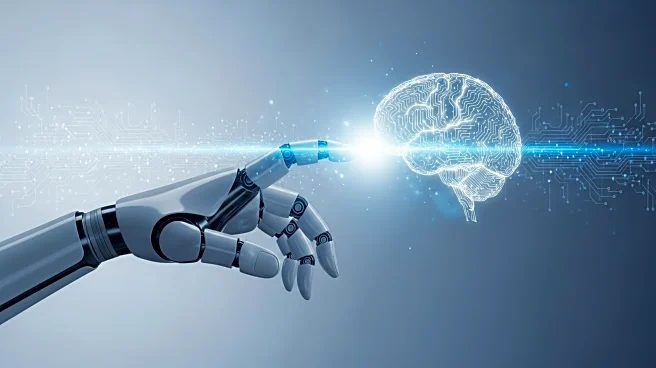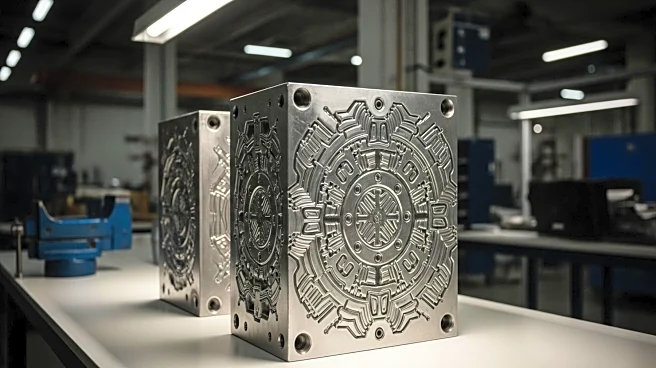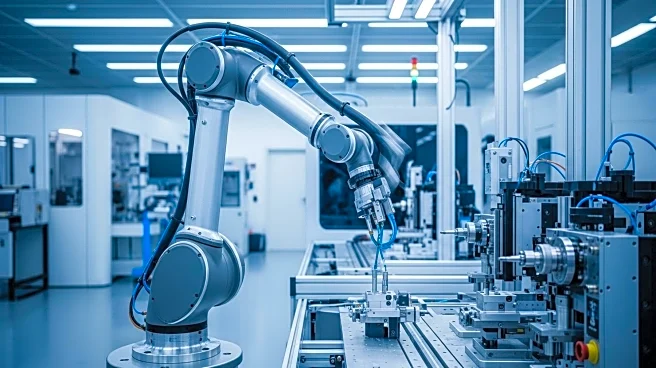What is the story about?
What's Happening?
The industrial automation market is experiencing significant growth, projected to reach $226.8 billion by 2025. However, the sector is grappling with technology fragmentation, which complicates standardization and interoperability of devices. This fragmentation poses a challenge for the next generation of workers, particularly as the Baby Boomer generation, which constitutes a significant portion of the workforce, approaches retirement. The industry is facing a shortage of skilled workers familiar with the diverse and fragmented tools used in manufacturing. This situation is exacerbated by the slow pace of innovation in the sector, which has resulted in a plethora of technologies and platforms that can be overwhelming for new entrants.
Why It's Important?
The challenges faced by the industrial automation sector have broader implications for the U.S. economy and manufacturing industry. As the sector struggles to attract young talent, there is a risk of skill gaps that could hinder the maintenance and upgrading of legacy systems. This could slow down the time to market for new products, affecting the competitiveness of U.S. manufacturers. Additionally, the reliance on external experts for software integration increases costs and may deter investment in new technologies. Addressing these challenges is crucial for ensuring the sustainability and growth of the industrial automation sector, which plays a vital role in the broader manufacturing industry.
What's Next?
To address these challenges, the industrial automation sector needs to focus on improving the usability of its tools and technologies. This includes developing more intuitive and user-friendly software that abstracts away technical complexities, allowing young workers to focus on innovation and creativity. Companies may also need to invest in training and development programs to equip the next generation of workers with the necessary skills. Additionally, fostering a culture of innovation and adaptability will be key to attracting and retaining young talent in the sector.
Beyond the Headlines
The ongoing challenges in the industrial automation sector highlight the need for a strategic approach to workforce development and technology integration. As the industry evolves, there may be opportunities to leverage emerging technologies such as artificial intelligence and machine learning to streamline processes and improve efficiency. However, this will require a concerted effort to bridge the gap between existing legacy systems and new innovations. The sector's ability to adapt to these changes will be critical in shaping its future trajectory and ensuring its continued relevance in the global manufacturing landscape.
AI Generated Content
Do you find this article useful?
